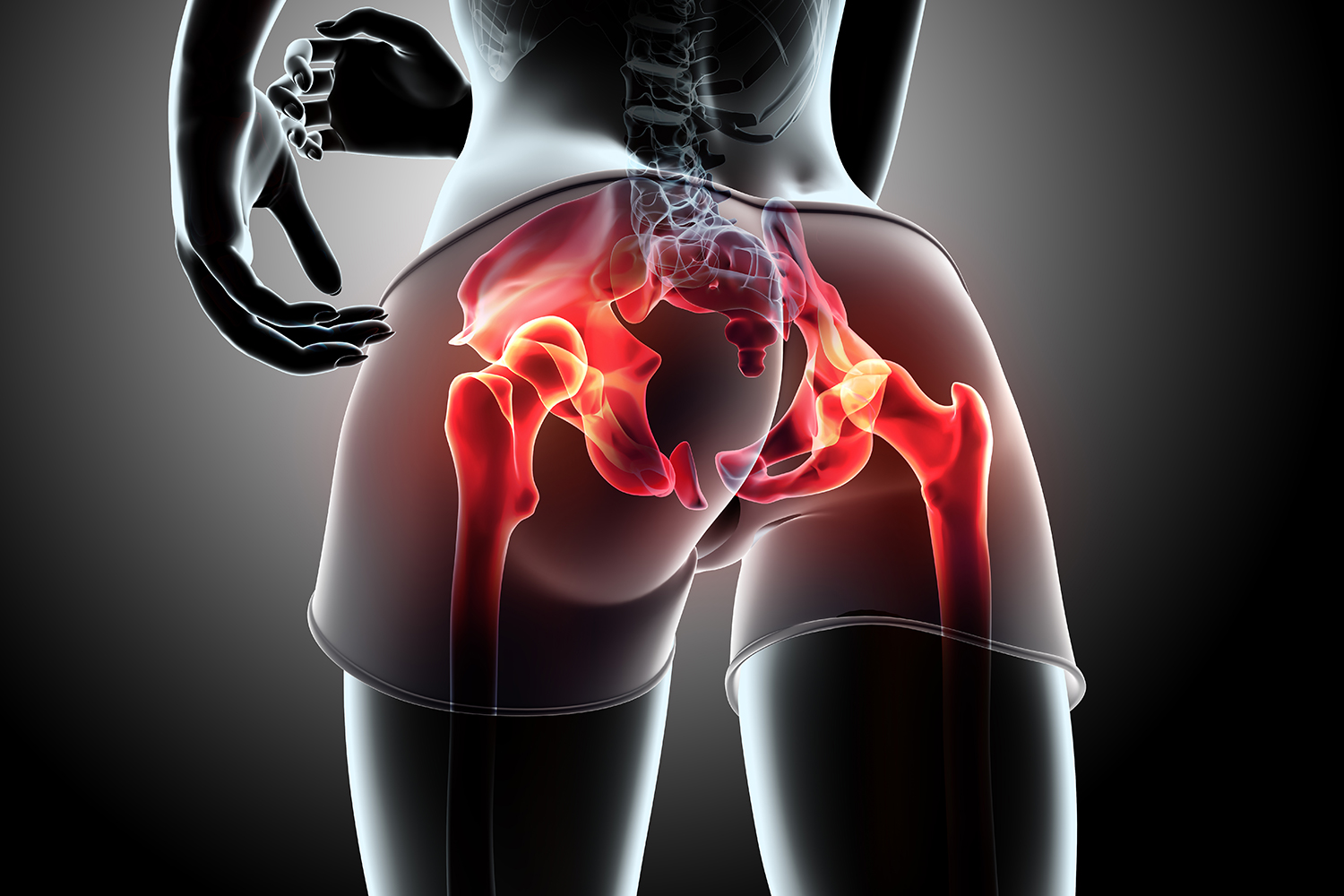Overview
Our body is made up of around 206 bones and 360 joints which work together to provide us with smooth movements. Out of these 360 joints, the hip joint is one of the most important joints in the human body. It allows one to walk, run, and jump. It bears most of the body’s weight and the force of the strong muscles of the hip and leg. Yet the hip joint is also one of our most flexible joints and allows a greater range of motion than all other joints in the body except for the shoulder. The structure of a hip joint is a ball-and-socket synovial joint formed between the (hip bone) and the femur. A round, cup-shaped structure on the hip bone, known as the acetabulum, forms the socket for the hip joint.
 The hip joint enjoys a variety of high ranges of motion. The ball-and-socket structure of the joint allows the femur to circumvent freely through a 360-degree circle. The femur may also rotate around its axis about 90 degrees at the hip joint. Each hip joint is capable of supporting more than half of the body’s weight along with any other forces acting upon the body. For example, During running and jumping, the force of the body’s movements multiplies the force on the hip joint to many times the force exerted by the body’s weight.
The hip joint enjoys a variety of high ranges of motion. The ball-and-socket structure of the joint allows the femur to circumvent freely through a 360-degree circle. The femur may also rotate around its axis about 90 degrees at the hip joint. Each hip joint is capable of supporting more than half of the body’s weight along with any other forces acting upon the body. For example, During running and jumping, the force of the body’s movements multiplies the force on the hip joint to many times the force exerted by the body’s weight.
Hip Replacement Surgery is a procedure used in medicine to replace hip joints inside the body. Hip joint replacement is a procedure in which a surgeon removes the damaged sections of the hip joint and replaces them with parts usually constructed of metal, ceramic, and very hard plastic. This artificial joint helps in reducing the pain and improves the smooth functioning of the troublesome joint. Several conditions damage the hip joint, creating a necessity for hip joint replacement surgery:
- Osteoarthritis – commonly known as wear-and-tear arthritis, osteoarthritis damages the slick cartilage that covers the ends of bones and helps joints move smoothly.
- Rheumatoid arthritis – caused by an overactive immune system, rheumatoid arthritis produces a type of inflammation that can erode cartilage and occasionally underlying bone, resulting in damaged and deformed joints.
- Osteonecrosis – If the blood supply to the ball portion of the hip joint gets interrupted, such might result from a dislocation or fracture, the bone might collapse and deform.
The healthcare practitioner may recommend hip joint replacement surgery to investigate the signs that are causing:
- Pain persistence, despite medication
- Worsens with walking, even with a cane or walker
- Interferes with the sleep cycle
- Difficulty while getting dressed
- Affects the ability to go up or downstairs
- Makes it difficult to rise from a seated position
What is the importance of Hip Replacement Surgery Videos?
A healthcare specialist in bones and joint replacement is known as an Orthopaedic Surgeon. An orthopedic surgeon is qualified to diagnose orthopedic problems, perform or prescribe treatments, and assist with rehabilitation. An orthopedic practitioner can help in developing long-term strategies to treat illnesses, disorders, and issues related to the bones, joints, ligaments, tendons, and muscles. There are several advantages of having hip replacement surgery such as:
- High success rate – hip replacement is seen as one of the most successful operations that medicine has to offer. It is an effective, safe, and durable way to treat many of the problems that come with severe arthritis of the hip.
- Pain-relieving procedure – Pain relieving is the greatest benefit that the procedure offers and the main reason for surgery. A hip replacement can provide a dramatic reduction in pain, with almost all patients getting complete, or near-complete relief from arthritic hip pain.
- Improved mobility and hip function – A hip replacement allows getting back to walking without restraint. The improved hip function should also help significantly with other typical problems linked to hip arthritis, such as going up the stairs, putting on socks, getting up from a chair, etc.
- Long-lasting effect – A hip replacement is a long-lasting approach to treat the problems that come with severe hip arthritis. Current evidence shows that 80-85% of hip replacements are still working 20 years after they were inserted.


